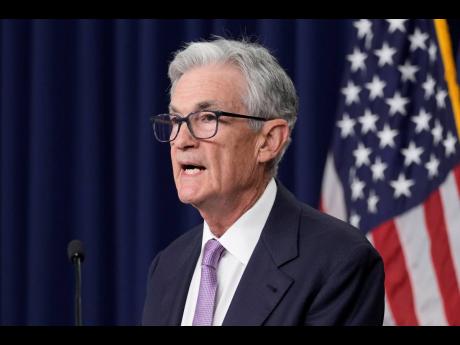Federal Reserve cuts key rate by sizeable half-point, signalling end to its inflation fight
The Federal Reserve of the United States on Wednesday cut its benchmark interest rate by an unusually large half-point, a dramatic shift after more than two years of high rates that helped tame inflation but also made borrowing painfully expensive for American consumers.
The rate cut, the Fed’s first in more than four years, reflects its new focus on bolstering the job market, which has shown clear signs of slowing. Coming just weeks before the presidential election, the Fed’s move also has the potential to scramble the economic landscape just as Americans prepare to vote.
The central bank’s action lowered its key rate to roughly 4.8 per cent, down from a two-decade high of 5.3 per cent, where it had stood for 14 months as it struggled to curb the worst inflation streak in four decades. Inflation has tumbled from a peak of 9.1 per cent in mid-2022 to a three-year low of 2.5 per cent in August, not far above the Fed’s 2 per cent target.
The Fed’s policymakers also signalled that they expect to cut their key rate by an additional half-point in their final two meetings this year, in November and December. And they envision four more rate cuts in 2025 and two in 2026.
In a statement and in a news conference with Chair Jerome Powell, the Fed came closer than it has before to declaring victory over inflation.
“We know it is time to recalibrate our (interest rate) policy to something that’s more appropriate given the progress on inflation,” Powell said. "We’re not saying, ‘mission accomplished’ ... but I have to say, though, we’re encouraged by the progress that we have made.”
“The US economy is in a good place," he added, "and our decision today is designed to keep it there.”
Though the central bank now believes inflation is largely defeated, many Americans remain upset with still-high prices for groceries, gas, rent and other necessities. Former President Donald Trump blames the Biden-Harris administration for sparking an inflationary surge. Vice President Kamala Harris, in turn, has charged that Trump’s promise to slap tariffs on all imports would raise prices for consumers even further.
Rate cuts by the Fed should, over time, lead to lower borrowing costs for mortgages, auto loans and credit cards, boosting Americans’ finances and supporting more spending and growth. Homeowners will be able to refinance mortgages at lower rates, saving on monthly payments, and even shift credit card debt to lower-cost personal loans or home equity lines. Businesses may also borrow and invest more. Average mortgage rates have already dropped to an 18-month low of 6.2 per cent, according to Freddie Mac, spurring a jump in demand for refinancings.
“It’s a step in the right direction,” Laura Rosner-Warburton, senior economist of MarcoPolicy Perspectives, said of Wednesday's Fed move.
The additional rate cuts it indicated it will make, she said, will “prevent risks from building and the unemployment rate from rising. They are trying to keep the economy in good shape.”
In an updated set of projections, the policymakers collectively envision a faster drop in inflation than they did three months ago but also higher unemployment. They foresee their preferred inflation gauge falling to 2.3 per cent by year’s end, from its current 2.5 per cent, and to 2.1 per cent by the end of 2025. And they now expect the unemployment rate to rise further this year, to 4.4 per cent, from 4.2 per cent now, and to remain there by the end of 2025. That’s above their previous forecasts of 4 per cent for the end of this year and 4.2 per cent for 2025.
Powell was pressed at his news conference about whether the Fed’s decision to cut its key rate by an unusually large half-point is an acknowledgement that it waited too long to begin reducing borrowing rates.
“We don’t think we’re behind,” he replied. “We think this is timely. But I think you can take this as a sign of our commitment not to get behind. We’re not seeing rising (unemployment) claims, not seeing rising layoffs, not hearing from companies that that’s something that’s going to happen.”
He added: “There is thinking that the time to support the labour market is when it’s strong and not when you begin to see the layoffs. We don’t think we need to see further loosening in labour market conditions to get inflation down to 2 per cent.”
The Fed’s next policy meeting is November 6-7.
_____
AP

